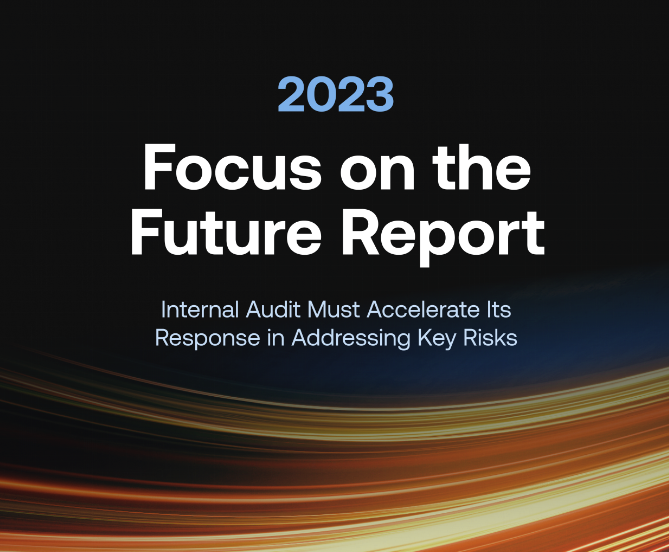
New Report: 2023 Will Likely Present More Challenges Than Internal Auditors Think
December 1, 2022
In 2022 My Top 10 Blogs Revealed a Lot About Internal Auditors’ Priorities
December 12, 2022Each year, there are a handful of survey-based research reports that are highly anticipated for those of us who like to peer toward the risk horizon. I recently shared insights on AuditBoard’s 2023 Focus on the Future Report, which surveyed American chief audit executives on vulnerabilities facing their organizations in the year ahead. In September, I shared a similar report by The ECIIA on the perspectives of European CAEs. The blogs, which were posted the same day the reports were released, continue to generate readership around the world.
This week, another highly anticipated report is being released. The 11th annual Executive Perspectives on Top Risks for 2023 and 2032 is a joint undertaking by North Carolina State University’s ERM Initiative and Protiviti. Based on a survey of more than 1,300 board members and executives worldwide, this report offers insights on risks in 2023 as well as 10 years from now.
I always expect the annual report from Protiviti and NC State to illuminate the risk outlook through the lens of the C-suite and boardroom, and this year’s report doesn’t disappoint. I strongly believe it is a must-read resource for internal auditors around the world as they maintain a focus on the risks facing their own organizations. Reviewing the results of the annual reports is an important feature of my new seminar Auditing at the Speed of Risk.
In summarizing this year’s survey results, the authors offer a number of critical observations:
- Uncertainty that organizations face is elevating risk concerns for executives and boards.
- Despite heightened risk velocity and volatility, C-suite resistance to change persists.
- Economic risk and uncertainty are top of mind.
- Talent and technology concerns prevail in the composite of top risks.
- There is a diversity of perspectives throughout the C-suite and boardroom.
- A long-term view of risks is vital to successfully navigate the near term.
The report also observes “there is churn in the lists of top risks.” It notes that 5 of the top 10 risks from the 2022 survey results fell out of the list for 2023, and 3 of the top 10 fell out of the list for the decade ahead. I view this as further evidence that risk volatility continues to present extraordinary challenges to executives, risk managers and internal auditors in focusing on the most critical risks facing their organizations.
Board members and executives believe the top seven risks their organizations will face in 2023 are:
- Talent management may limit the ability to achieve operational targets.
- Economic conditions may significantly restrict growth opportunities.
- Increases in labor costs may affect the ability to meet profitability targets.
- Resistance to change may limit the ability to adjust the business model and core operations.
- Uncertainty surrounding the core supply chain ecosystem may continue to challenge organizations.
- Changes in the work environment may lead to challenges in sustaining culture and the conduct of the business.
- Adoption of digital technologies may require new skills in short supply, requiring significant efforts to reskill/upskill employees.
This is the third Top Risks report that also prompted executives for an assessment of risks their organizations could face 10 years out. When asked how risks could affect their organizations in 2032, the top five were:
- Talent management may limit the ability to achieve operational targets.
- Adoption of digital technologies may require new skills in short supply, requiring significant efforts to reskill/upskill employees.
- Rapid speed of disruptive innovation may outpace the ability to compete.
- Resistance to change may limit the ability to adjust the business model and core operations.
- Ensuring privacy and compliance with growing identity protection expectations may require significant resources.
In this year’s survey, board members and executives are clearly signaling concerns related to macroeconomic risks – not surprising given the surge of inflation and prospect of recession facing many of the world’s markets. The most striking difference in this year’s report versus last year’s in looking 10 years out is the concern related to economic impact of data privacy and protection.
At almost 200 pages, the Top Risks report is far too comprehensive for me to summarize it all in this blog. There are insightful discussions on topics such as:
- Calls to action based on survey results
- A three-year comparison of risks
- Analysis of views by executive positions
- Evaluating an organization’s approach to risk oversight
- Analysis of risk by different sizes of organizations
The report also contains valuable analysis by industry, geographic region and more.
As with AuditBoard’s 2023 Focus on the Future Report, the only way to truly appreciate the extraordinary insights in this report is to make it a priority to read it thoroughly.
Finally, congratulations to my friends and colleagues at NC State and Protiviti on another outstanding and timely report on the top risks that lie ahead.




I welcome your comments via LinkedIn or Twitter (@rfchambers).